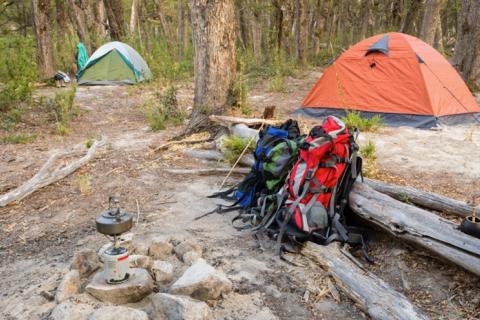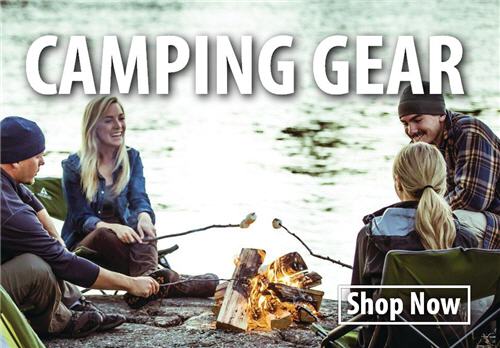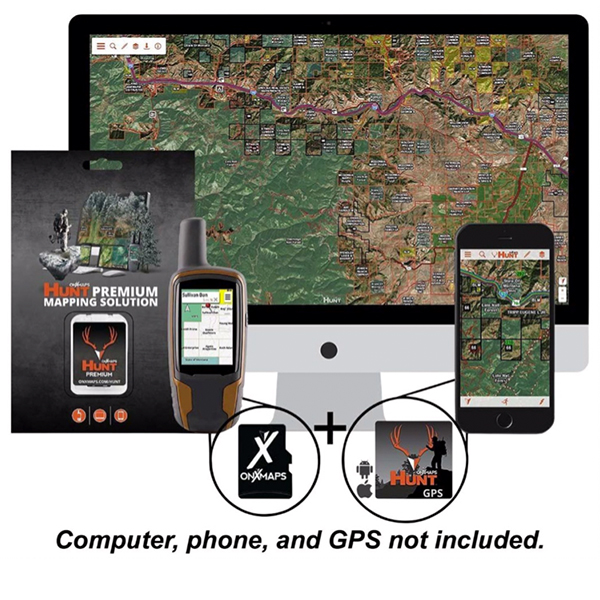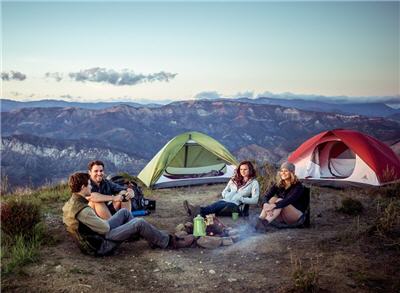
Is your idea of “camping” to “get away from it all?” If your answer is “yes,” what does that really mean? “Dispersed camping” is the term used for camping on public lands anywhere outside of a designated campground. In other words, it’s driving or hiking into a public area and setting up your tent or trailer. Often this is free camping with no services while some National Parks have dispersed camping opportunities you could be charged a fee for entrance to the park and not for camping.
 While this may sound like the ultimate camping trip, dispersed camping comes with regulations and restrictions meant to protect the land and environment that is owned by everyone. Before setting out for a dispersed camping trip, there are three very important of things you need to
While this may sound like the ultimate camping trip, dispersed camping comes with regulations and restrictions meant to protect the land and environment that is owned by everyone. Before setting out for a dispersed camping trip, there are three very important of things you need to
know.
1. Scout the Land and How It's Managed FIRST, Get the Facts
Not all public lands are the same. Depending on which level of government and what agency manages the land, the restrictions on dispersed camping are very different. Some don’t allow disbursed camping at all. You need to research the area you’d like to camp to determine if it’s owned by the federal government, state, county, or other municipality. Then you need to determine which agency is responsible for the property. If it’s owned by the federal government it could be managed by the National Forest Service, the Fish and Wildlife Service, the Bureau of Land Management, or the National Park Service just to name a few!
 Your scouting can begin by locating a prospective camping location on Google Maps, but to really go in close to see property boundaries and private holdings within public lands, you’ll need specialized maps and software like OnXmaps.
Your scouting can begin by locating a prospective camping location on Google Maps, but to really go in close to see property boundaries and private holdings within public lands, you’ll need specialized maps and software like OnXmaps.
Tip: If you're new to the term Dispersed Camping: Dispersed camping is camping outside of a designated campground area on public lands.
Helpful Public Land and Dispersed Camping Terms & Definitions
- What is WMA land? - Wildlife Management Area are lands established as wildlife management areas or wildlife and environmental areas. These areas are often designated for hunting, fishing or simply preservation. Some states charge a day use or seasonal permit fee. To find detail information by state do a web search of “WMA <state name>” should provide you with appropriate links.
- What is BLM? - Bureau of Land Management The BLM administers public lands that offer a wide range of recreation opportunities such as 4x4 driving, hiking, dispersed camping and hunting. The agency controls more than 247.3 million acres of public and requests you to follow a policy of Leave No Trace. Here is a link to the Bureau of Land Management Camping Guidelines.
- What is NPS? – National Park Service since 1916, the NPS has been entrusted with the care of our natinal parks. With the help of volunteers and partners, they safeguard the national parks, perserving local history, celebrating local heritage, and creating close to home opportunities for kids and families to get outside, be active, and have fun.
- What is USFS? – US Forestry Service manages and protects 154 national forests and 20 grasslands in 43 states and Puerto Rico. The agency’s mission is to sustain the health, diversity, and productivity of the nation’s forests and grasslands to meet the needs of present and future generations.
- What is Public land? - Most public lands in the United States are held in trust for the American people by the federal government and managed by a range of federal and local government agencies.
- What is Boondocking? - Boondocking is a type of camping in nature that doesn't cost anything. Some people call it "dispersed camping", "free camping" or "wild camping". RV campers will sometimes go boondocking in their RVs. Typically these areas are remote in a completely undeveloped area with no services such as trash removal, hookups, tables, fire pits, cell service etc.
- What is a Primitive Campsite? - Another term for boondocking and dispersed camping. A primitive campsite allows people enjoy the solitude and primitive experience of camping away from developed campgrounds and other campers.
Tip: How to Select a Wilderness Campsite That’s Safe and Comfy
 Learn the Rules for the Property
Learn the Rules for the Property
Once you determine the ownership and designation of the property, you’ll need to do some online sleuthing to find the dispersed camping regulations that apply. However, it may leave you with as many or more questions than when you started.
For example, dispersed camping is allowed on state forests in Minnesota. The Minnesota forest camping webpage says, “If you enjoy camping far from others and with no amenities at all, dispersed camping is for you. With dispersed camping, you may camp outside of designated campsites and campgrounds on state forest land. First-come, first-served.” However, a later Q&A section says, “We ask all overnight campers to help protect state forests by only using designated campsites … However, dispersed camping is allowed in state forests. Please practice the “leave no trace” camping ethic if you camp outside of designated areas. Overnight camping is not allowed at developed day-use areas.”
Then comes a bullet point list that includes:
“When camping in state forests, please:
- Use exiting camping areas.
- Light fires only within rings and charcoal grills in state forest designated-use areas.”
So, does this mean you cannot have a campfire while dispersed camping or that it’s okay to have a fire outside a fire ring when you’re dispersed camping?
This is evidence the best plan is to meet a face-to-face with the office responsible for managing the specific area you wish to camp before you set out. Even if you find clear regulations on dispersed camping online, interpretations of rules vary with jurisdiction. An ounce of prevention is better than misunderstandings, citations, days in court, and attorney’s fees.
3. Prepare for No Amenities, No Open Fire
No matter what type of property you’ll be dispersed camping on, you should plan for “leave no trace” camping. That means:
- The only fire you can have will be with a camp stove of some kind.
- You will need to bring your own water.
- You cannot cut or trim brush or trees.
- Deposit solid human waste in cat holes 6-8 inches deep and at least 200 feet from water, campsites, and trails. Then cover and disguise the cat hole when finished.
- Pack out all trash, leftover food, and litter.
- Keep campsites small. Focus activity on areas where vegetation is naturally absent.
- Do not camp in one spot for more than a few nights so the campsite does not get beat down and vegetation smashed. (Some areas have specific limits on duration of stays in one spot.)
- There is to be no unofficial marking of trails or campsites.
- Be alert to bears and other wildlife.
Tip: 7 Reasons You Should Use Solar Power When Camping to Charge Your Electronics
- 6532 views


